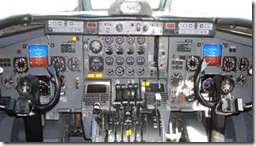 Welcome to Wired!
Welcome to Wired!
The fundamental challenge of aviation has remained constant as it transitions from its first to second century: develop a safe, reliable, efficient, and economic system that moves people through the air from Point A to B. Only the specifics have changed. Developing a satellite-based digital infrastructure that makes safe and efficient use of the finite natural resource known as airspace has taken the place of airframes, powerplants, and paved runways.
Making this challenge more interesting for operators of Part-25 turbine aircraft are the economic constraints that assign more responsibilities to fewer people, all of whom are climbing the learning curve of digital aviation technology. Having climbed this curve, the experts at ASIG have amassed more than a century of avionics and systems experience. To help you make informed decisions, every two weeks they will share information and insights in the new ASIG Wired.
Take, for example, the headline of this post. As reported in the Washington Post, the US Senate approved a $34.5 billon FAA funding bill on March 23, 2010, that would have the navigation and surveillance elements of NextGen up and running at the nation’s 35 busiest airports by 2014. As a whole, NextGen is supposed to be online by 2020.
This news is not that big of a deal—unless you regularly fly to and from America’s busiest aviation hubs. In that case, 2014 doesn’t leave a lot of time to upgrade your fleet with the systems that deliver the required navigational performance NextGen demands. At the same time, rushing to upgrade a fleet can have dire, long-term operational—and financial—consequences, says Luke Ribich, ASIG’s managing partner.
ASIG avoids the penalties of haste, and takes future requirements and upgrades into account, by creating comprehensive integration plans that look 10 to 15 years into the future. It creates them with SEMPER, a process for Systems Evolution, Modernization, Execution, and Realization that builds an integrated technical and business plan gives solutions based on a formal migration strategy, lifecycle costs as independent variables, and open system, commercial off-the-shelf components. (To learn more, request the SEMPER White Paper.)
Naturally, how much time and money it will take to connect your fleet to the second century of powered flight depends on variables unique to each operator.
There has been some talk of federal assistance to help operators equip their aircraft for NextGen. To be honest, we wouldn’t count on it. Airlines would be the primary recipients, and they are only slightly more popular than Wall Streeters right now. In an editorial about “The Future of Flight,” the Washington Post wrote that “some airlines are balking at having to pay for their end of the upgrade. But they will benefit from the implementation of NextGen and should ante up.”
For whatever reason, waiting is always an option: 2020 is still a ways away, and ATC will still have to handle analog aircraft for awhile after that, right? Yes, but remember when RVSM came online, and how those without it rarely climbed above fuel guzzling altitudes? If your fleet isn’t equipped for NextGen, take a number and be prepared to wait. ATC will work you into the flow as soon as it can, because as we all know, in aviation, timing is everything.
Until next time stay 5x5, Mission Ready & Wired!







